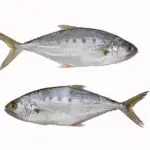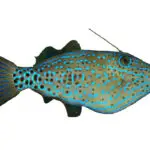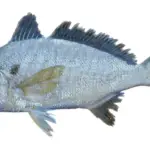Stingrays are common in warm saltwater fishing destinations and are caught by fishermen all around the world.
Due to their odd shape, and mysterious appearance, many anglers wonder: “Are stingrays hard to catch?“
The good news is, if you bring the right gear and fresh bait, most species of stingray are not difficult to catch.
They are often caught by mistake while fishermen are in pursuit of other saltwater fish species.
In this article ill talk about the difficulty in catching and landing a stingray, as well as give you some tips on how to avoid catching stingrays altogether.
Table of Contents
- Are Stingrays Hard To Catch?
- Are Stingrays Hard To Reel In?
- Do People Fish for Stingrays?
- What To Look For to Target Stingrays
- How to Avoid Catching Stingrays
- What to Do If You Accidentally Catch a Stingray
- Related Posts
Are Stingrays Hard To Catch?
Because stingrays are not picky eaters and have an extremely varied diet, they will often eat any type of bait that you have on your hook if it’s fished on the bottom. The most important thing to remember when stingray fishing is to target shallow water areas where depths range from 5 to 20 feet.

More often than not, stingrays are caught by mistake while fishermen are in pursuit of other saltwater fish species such as sharks, whiting, drum, and other coastal species.
Are Stingrays Hard To Reel In?
Once you hook into a stingray, they can be somewhat hard to bring to the surface. A big stingray will suction itself to the bottom, creating a vacuum. This can make them easy to hook, but very hard to reel in at times.
Let’s not forget that some species of stingray like the Southern Stingray, can grow up to 200 pounds with a wingspan up to 5 feet across!
No matter what size tackle you’re using, something that big is VERY difficult to reel in!
Do People Fish for Stingrays?
Even though stingrays can be somewhat easy to catch, they are not a popular species to target and catch.
In some places, stingrays are considered a “trash” fish. In others, however, they are considered to be trophies.
Fishing for stingrays has become more and more popular as people begin to learn about them.
A big stingray can put up an amazing fight once they are on the hook, and their power rivals fish that are much bigger in size and popularity.
Another reason for their rise in popularity is that stingray meat can also be used to make a delicious meal. Many people are surprised to learn that stingrays taste amazing and can be made into many delectable dishes!
Due to their surprising power, tasty meat, and widespread distribution, stingrays are becoming more and more popular amongst saltwater anglers. There are now many people who head out to shallow areas to specifically target and catch stingrays.
What To Look For to Target Stingrays
In order to target stingrays, you must be fishing in the right areas and at the right depths.
You will want to start by fishing in waters that are relatively shallow, preferably 20 feet or less. This will increase your chances of finding and fishing in one of their feeding areas.
Stingrays love flat, sandy bottoms in these shallow areas where they can bury and hide. They can also be found in areas with muddy bottoms, seagrass beds, lagoons, and shallow reefs.
Stingrays are most active at night, but can also be caught in the mornings and evenings as well when they start to hunt for their preferred food.
They love to eat things such as shellfish, shrimp, worms, crabs, and smaller fish along the bottoms where they live. If you see good numbers of their preferred prey, you are sure to find some stingrays nearby!
How to Avoid Catching Stingrays
Stingrays are often caught unintentionally when anglers are pursuing other bottom-dwelling fish.
It cant get really annoying when you’re trying to target whiting, black drum, jack crevalle, mullet, sharks or other species, and stingrays keep stealing your bait!
Luckily there are a few simple things that you can do to help avoid catching stingrays when you are out fishing for other species.
One of the easiest ways to avoid catching stingrays is to fish in areas where stingrays are not found. Because they prefer shallow waters, fishing in deeper waters will lower your chances of accidentally hooking into a stingray.
You can also avoid stingrays by not fishing along the bottom. Lifting your bait or lure even a few feet from the bottom of the water will significantly reduce your chances of a stingray finding it.
Another simple way of avoiding stingrays on the end of your fishing line is to up your hook size.
Stingrays have extremely small mouths, so with larger hooks, you can decrease the chances of a hookup. Using size 4/0 hooks or larger will help to keep your bait and hook from getting eaten by a hungry ray.
What to Do If You Accidentally Catch a Stingray
If you do happen to catch a stingray unintentionally, there are two main ways that you can safely release it.
Above all else, you want to avoid the stinger on the tail as much as possible in order to avoid getting stung.
The first and potentially best way to release a stingray that you caught, is to flip the ray onto its back. This will point the stinger away from you and give you clear access to the mouth. After removing the hook, you can flip the stingray back over and allow it to swim away safely.
The last method is to simply cut the leader off as close as you can to the hook. This can be the best method if you are dealing with a very large stingray and want to avoid more stress on the fish or don’t have access to the proper tools to help with the hook removal.
After some time, the hook that is left will eventually rust and fall out of the stingray’s mouth.
See Also: Why Do Stingrays Jump Out Of The Water?

Growing up in Florida, I’ve been surrounded by saltwater my entire life…and I love sharing my passion with others.
To learn more about why I started Saltwater Mecca, visit the ABOUT page.
Thank you for reading this article. Browse around & have some fun!





